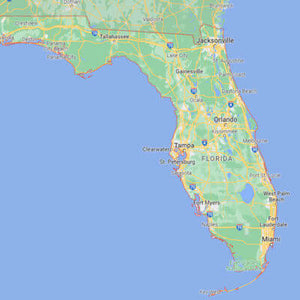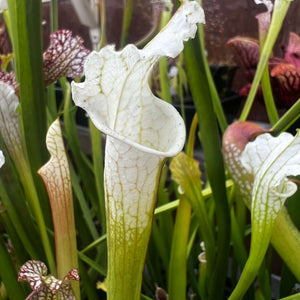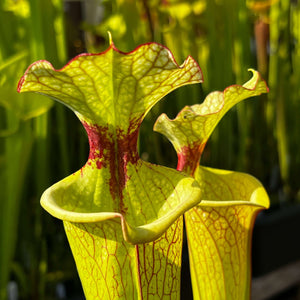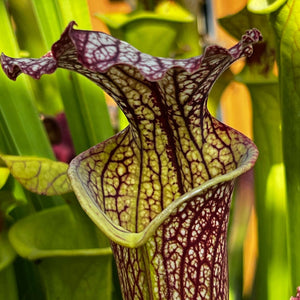Description of Iris setosa 'Baby Blue'
Iris setosa 'Baby Blue' is a dwarf variety of the Arctic Iris. Gardeners love its soft blue flowers and neat growth. This tough perennial fits well in rock gardens, by ponds, or in the front of a border. It does especially well in cooler parts of the country.
Appearance and Size
This iris forms a tight clump of narrow, green leaves. It reaches a modest height and spread of about 30 to 45 centimetres. In late spring and early summer, slender stems rise above the foliage. They carry flowers of a pale, powdery blue. Each bloom has fine, darker blue veins. A small yellow or white mark sits at the centre of each petal. The flowers are about 5 to 8 centimetres across. This creates a delicate look that brings a calm feeling to the garden.
How to Grow Iris setosa 'Baby Blue'
This plant is adaptable and not fussy. It grows happily in full sun or partial shade. For the best flower display, choose a spot that gets plenty of sun. It likes soil that stays moist but drains well. You can improve your soil by mixing in some garden compost or well-rotted manure. While it can handle drier soil for a short while, it performs best with consistent moisture. This makes it a good choice for planting near a water feature or in a naturally damp part of the garden.
Iris setosa 'Baby Blue' is fully hardy in the UK. It handles frost with no problems. This hardiness makes it a reliable plant for temperate gardens.
Plant Care and Maintenance
Looking after this iris is simple. Water it during long dry spells to keep the soil from drying out completely. A yearly mulch with organic matter helps retain moisture and feed the plant. After the flowers finish, you can cut the spent stems back to keep things tidy. In late autumn, trim the old leaves down to the ground.
Every three to four years, the clump may become crowded. The best time to divide it is in early spring. Dig up the clump and gently pull it apart into smaller sections. Replant the fresh divisions straight away. This process keeps the plant healthy and vigorous.
Garden Uses for Iris setosa 'Baby Blue'
Its compact size opens up many planting options. Use it to add soft colour to a rock garden. It works beautifully at the edge of a pond where its reflection can double the impact. Plant it in groups in a mixed border for a cool, early summer display. Because it stays small, it is also perfect for growing in a container on a patio.
This iris also suits a more natural garden style. Let it settle in at the edge of a woodland or in a damp meadow. It will blend in and create a relaxed, serene atmosphere.
Benefits for Wildlife
The flowers of Iris setosa 'Baby Blue' are more than just pretty. They provide a useful source of nectar for bees and other pollinating insects in late spring. If you plant it in a damp area, its dense roots can also help to hold the soil together. This reduces erosion and improves the ground structure.
Iris setosa 'Baby Blue' is a straightforward and rewarding plant. Its gentle colour, easy-going nature, and value to wildlife make it a smart choice for many gardeners.

 UK-grown carnivorous plants
UK-grown carnivorous plants



